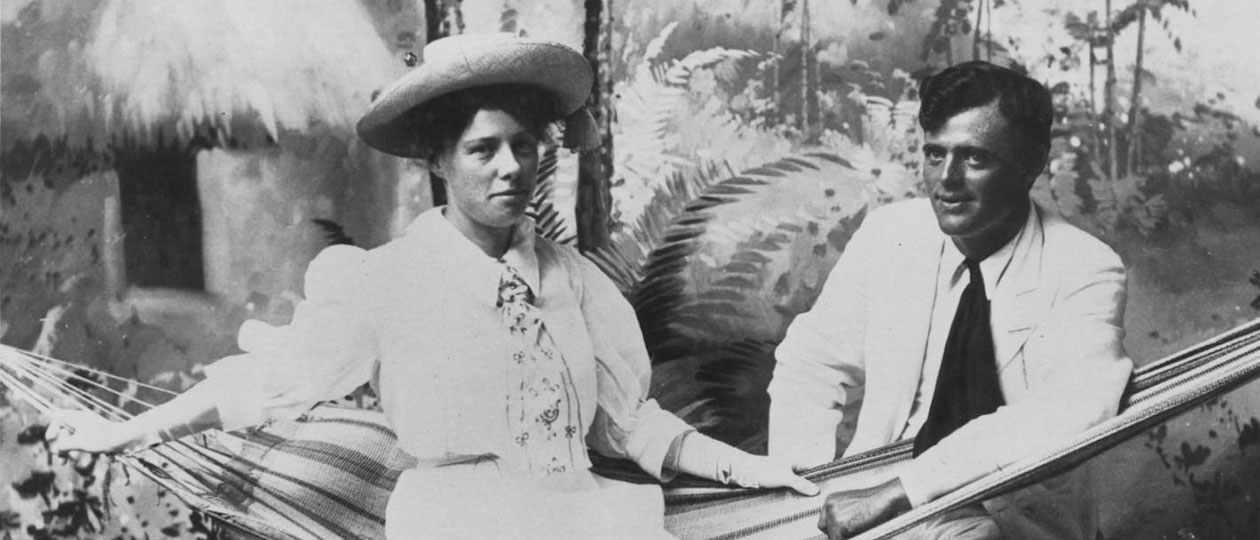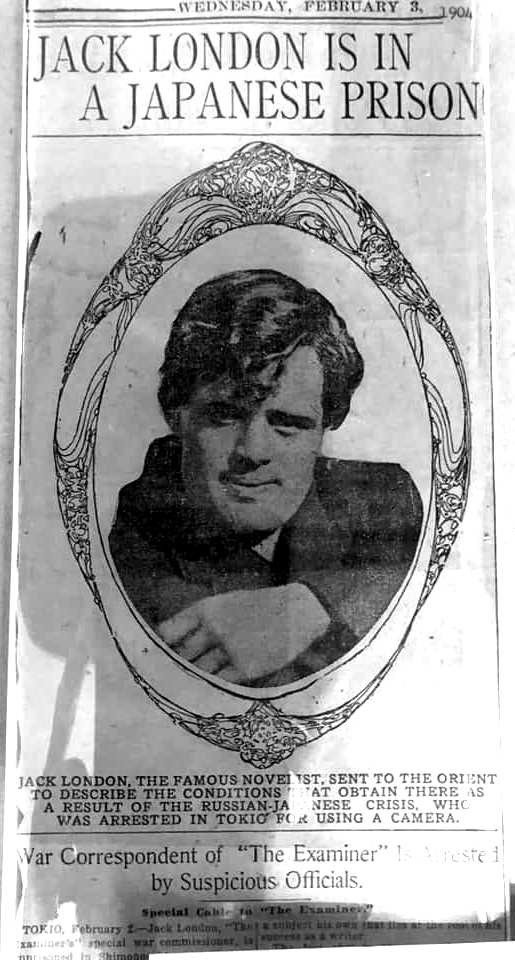
Jack London Covered The War Where My Ancestors Fought: Part 1
Jack London managed to get a ticket on a Japanese steamship to Korea only in Moji. Before boarding it, he decided to wander around the city and take pictures, but was arrested by local police who mistook him for a Russian spy.
On February 3, 1904, The San Francisco Examiner published a news item: “Famous American writer Jack London in Japanese prison for using his camera.”

A couple of days later, he was released due to Lloyd Griscom, American envoy in Tokyo who asked the Japanese Foreign Minister to settle the incident.
On February 8, the Kiyogo Maru steamship was supposed to leave from Shimonoseki en route to Chemulpo. London knew that the Japanese fleet had blockaded Russian ships in that Korean port and hoped to get to the site of a possible naval battle in time. However, the Japanese military authorities took the Kiyogo Maru for their own needs.
Jack later recalled: “On the eve of the war, all ships plying between Japanese and Korean ports were laid up, but I still managed to get a third-class ticket on the last vessel.” This ship, however, instead of Chemulpo was going to Pusan, located on the opposite side of Korea. Besides, London had to spend the night on the upper deck under wet snow.
In Pusan, another unpleasant surprise: the steamship that could carry London to Chemulpo was taken away by Japanese authorities, too. As a result the only way to reach Chemulpo was to rent a sailboat from Korean fishermen. What London had to endure was comparable to the adventures (and misadventures) of the heroes of his Tales of the North.
“I hired a junk,” he said in a letter to his fiancee Charmian Kittredge. “You should see me now. I’m the captain of a junk with a crew of three Koreans who speak neither English nor Japanese, and five Japanese passengers who speak neither English nor Korean. Only one of them knows a dozen English words. And with these polyglots I’ll have to sail hundreds of miles along the Korean coast.”
On February 9th , while London was making his way through the winter cold in a frail, windswept vessel across the Yellow Sea to Chemulpo, the Japanese fleet suddenly attacked the Russian fortress Port Arthur. A few hours later, at Chemulpo, Russian cruiser Varyag and gunboat Korietz engaged a Japanese squadron of 2 battleships, 6 cruisers and 3 destroyers. Unaware of that, London was still on his way to Chemulpo.
In his peculiar style he informed Charmian:
“Thursday, February 11, 1904: I am on board of another junk. The wind roars over the Yellow Sea. The rain lashes. Day and night sailed to Kunsan. One Korean at the tiller, two more at two sails, four terrified Japanese, and the fifth so seasick that he couldn’t even be afraid.
“We reached Kunsan at night, having lost a mast and having broken the rudder. We arrived in pouring rain that cut like a knife, and I settled in for the night comfortably. Five Japanese girls helped me undress, bathe, and get into bed while I received visitors, both men and women. Same thing in the morning. Mayor of Kunsan, chief of police, and other big shots visited me in my bedroom while I shaved, washed, dressed, and ate. All of the notables of the city came to see me off, shouting “Sayonara” endlessly. A new junk, crewed by five Japanese, none of whom speak a word of English, is sailing along the Korean coast.No news from white people for a long time. The natives mentioned naval battles and landings of troops, but nothing reliable. The ground is covered with snow right down to the water’s edge. And there are no stoves to keep warm, only charcoal warmers with a few pieces of coal in them.”
Two days later London wrote another letter to Charmian, describing their wretched boat (“how do they even sail on them?”), storm, snow and terrible cold – “even the sea water freezes”. He also praised Japanese sailors: “They are cooler, braver and more daring than the Koreans”.
On February 15th, London was nearly blinded by a terrible headache. The day before they landed and found a shelter in a local fishing village. At night, his five sailors, himself and some twenty men, women and children slept side by side in a tiny room.
“I am the first white man in these parts, — Jack wrote to Charmian. — At midnight I showed my false teeth to an old man, and he was so impressed that he woke up the whole crowd”. Later, when everybody went back to sleep, at 3 a.m. the old man crawled up to London and woke him up with a request to demonstrate his false teeth again.
On February 16th Jack London finally reached Chemulpo. Robert Dunn, a photographer for Collier’s magazine who had met Jack aboard the Siberia, could barely recognize him.
“He was a wreck,” Dunn said in his report, “Jack London Knows No Fear,” published on June 26, 1904. “His ears were frostbitten, his fingers were frostbitten, his feet were frostbitten. And he still said that he didn’t care at all, as the main thing was that he finally reached the front. Jack is one of the bravest men I’ve ever met. He’s as much a hero as any of his characters. He knows no fear, and he’s willing to risk his life for the right cause.”
To be continued…





